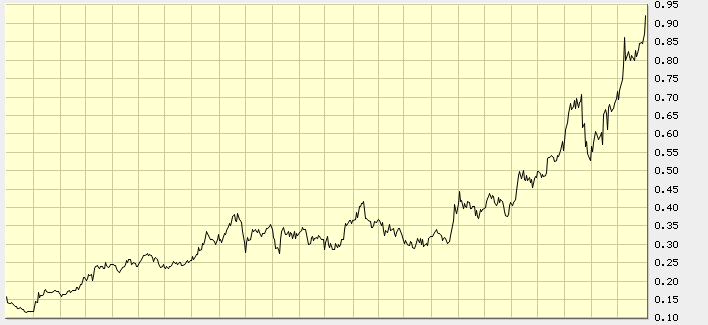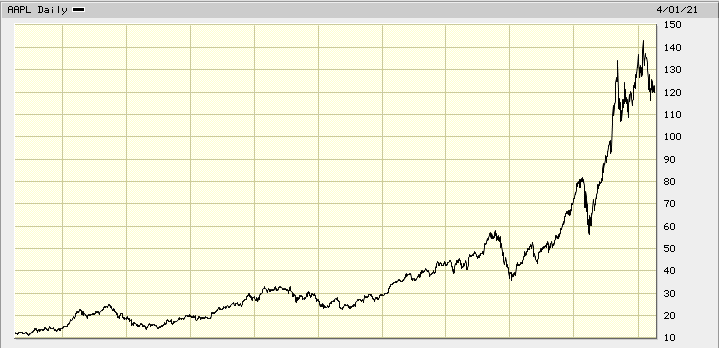Why your investments aren’t growing
What an awesome year for investors! The Dow Jones Index is up 58% in the last year. Rank amateurs are striking it rich. Your Uber driver, plumber and urologist are all making zillions! Investing has become a way better fad than the Macarena, the Ice Bucket Challenge and even fidget spinners. And everyone is crushing it except, maybe, you. Let’s look at the 5 reasons why your investments aren’t growing and everyone else’s are:
1. Everyone else’s aren’t growing
It’s a bit like Facebook. Remember Ronnie’s post about getting demoted at work? No? How about the one about Tom getting dumped by his girlfriend? Or maybe the one showing Tammy watching Netflix all alone since she wasn’t invited to the virtual wine and cheese Zoom party? Investing is a lot like that. People do plenty of bragging about their winners. Everyone stays silent about their losers. In other words, don’t listen to the hype, its likely not showing you a clear picture. Maybe you are doing ok and everyone else is just exagerating. On the other hand, maybe your results really do suck. Let’s fix that. Read on.
2. You are watching your stocks like, well, a watched pot
No wonder they aren’t boiling. Warren Buffett often paints the picture of someone building or buying a business. Do they call in a business valuator every day to get an update on the value of the business? How about 4 times a day? Unlikely. Give your stocks some time. As a stockholder you own a piece of a business, give it time to grow.
For example, look at this stinker of a stock:

Whoa! A drop of almost 37% and this chart was taken over just 2 1/2 months. Should I sell?
Why can’t it be more like stock Number 2 below?

This one went up almost 10X in just 2 years. Love that. And the great news is that the first stock IS a lot like the second stock. In fact they are the same stock. They are both Apple stock (AAPL). Here is a longer term chart:

If you play around with stock charts, you will find that any stock can look like a winner or a loser by just changing the time frame. In conclusion: Buy quality stocks and hold them for the long haul. Don’t buy or sell based on the ups and downs of their charts. Stop watching them at every commercial break, they will do just fine without you. Too much trading could be why your investments aren’t growing.
3. Don’t buy and sell based on news headlines, boredom or tips
The news is there to sell more news. It’s not intended as investment advice. Let’s look at a few headlines that might have made you sell your stocks:
- North Korea is going to flatten us with their missiles.
Didn’t happen. The stock market continues to grow. If it does happen, our investment returns won’t be our biggest worry. - We are running out of oil, the world is doomed!
Lots still available! In fact oil prices were negative just a few months back. Couldn’t give the stuff away. - The 2008 Financial Crisis will decimate stocks.
It did for a while. Since then they have grown 292%. Thankfully you didn’t sell and miss all of that. Did you? - The volcano in Eyjafjallajökull Iceland will wipe out airline stocks!
Hard to spell and it did suspend flights, but planes are back and flying. - Financial expert says get out of the markets now!
This is a permanent-headline. Like the sign at a bar that says free beer tomorrow. Ignore it. - If Trump gets in, the stock market will implode.
Actually markets rose 9.6% in his first 4 months. - If Biden gets in, the stock market will implode.
Actually markets rose 13.6% in his first 4 months.
In other words, headlines don’t have a great track record of predicting stock markets. Even if you get out at the right time, how will you know to get back in at the right time? Build a quality portfolio and then let it grow.
Warren Buffett’s quote tells the story
“The stock market is a device to transfer money from the impatient to the patient”. Print this off, cut it down to size and Scotch tape it to the screen of wherever it is that you buy and sell stocks. It’s like taping a picture of either your fat self, or the movie star you want to become, to your fridge door.
A Dalbar Inc study showed that for the twenty years ending in 2015, the S&P 500 averaged growth of 9.85% a year, while the average equity investor earned a market return of just 5.19%. The reason is human emotion. Greed. Fear. The fun of hitting the buy and sell button. The craving to lock in wins. The panic to avoid tragic losses. Resist! Keep a qualified financial advisor in between you and your investments. Or develop the discipline to buy and hold. It works.
If you have dividend stocks with a dividend reinvestment program in place, you may learn to love the dips in stock prices. Sound weird? I wrote about that here.
The conclusion – buy and hold for the long term. Think of that old adage that your investments are like a bar of soap. The more you handle them the smaller they get. It could be a big reason why your investments aren’t growing.
4. Stay properly diversified
Some companies do better when interest rates rise. Others are happier when they fall. Sometimes bonds do better than stocks, other times the reverse is true. The US markets might outperform Europe. or it may be the other way around for a period of time. The same is true of small company stocks vs large company stocks. Returns vary by industry as well.
All of this makes it very hard to consistently pick winners. And even if you pick a great stock in a growing industry in a booming economy with rising productivity and a powerful product advantage and great Super Bowl ads, it may all come crashing down when the CEO gets caught licking quarts of ice cream at the supermarket.
How to prosper? Invest with proper diversification by:
- Asset classes – stocks, bonds and cash. Maybe some real estate.
- Geography – exposure to the major economies
- Duration in the case of bonds. Short, medium and long term
- Company size – so called large caps and small cap companies
- Industry type – tech, resources, consumer goods, financials etc
As an example of the first point, many people are terrified of the stock market and instead hold only cash, treasury bills, short term bonds and their wallet. As a result, they see terrible returns of under 1%. After tax they earn well less than inflation. That means that their money buys less every year. They lose by not investing. Here is a post about how to solve that one.
If this sounds complicated, get some help from a qualified financial advisor, or use Exchange Traded Funds to simplify diversification. As an example, part of my holdings are in Vanguard’s VTI Exchange Traded Fund. It holds over 3,600 companies in every industry. Well diversified. It has averaged over 8% annual growth since its inception and even pays a dividend. Combine that with a bond fund and you can build a solid portfolio. This is just an example, readers should do their own research prior to investing.
In short, if you are wondering why your investments aren’t growing, it could be that you aren’t properly diversified.
5. Don’t overpay for investment advice.
Many studies have been done about the ability of investment pros and fund managers ability to consistently outperform the market. The answer is that about 90% don’t. And you might be paying 1.5%, 2% or even more in fees for the privilege of trailing the market. The fees could be a combination of advisor fees, fund fees, commissions and other expenses. It can be a big reason why your investments aren’t growing.
How much does this matter? A lot. Those fees come right out of your returns and the effect compounds over time. Let’s take an example of an investor who invests $100,000, pays 1.75% in total fees and the investments earn 5% per year. Over 25 years, the investment would grow $238,635, but investment fees would add up to $116,176 and the investor would keep $122,460 or about half of the total return. Try some different scenarios on the excellent simulator at Larry Bates’ site here.
While that tool might whip you into a frenzy about investment fees, remember that for many people, an investment advisor can save them from blunders 1 through 4 above. The key is to ensure that you are getting more in value than you are paying in fees. Maybe that financial advisor stops you from selling during the start of the Covid crisis, thus keeping you in the market as it rebounded more than 50% in a year.
In summary, know how much you are paying in investment fees of all kinds and know your investment returns for each year. Compare your after fee returns to the benchmarks for each of your investment types – stocks, bonds etc.
Why your investments aren’t growing – the summary
Saving 10% or more of your income is a powerful step to wealth building. But the magic really happens when you have those savings invested and the results compound over time. If you are saving less than 10% look for ways to save more. There are lots of ideas in my blog on how to do that with minimal effort and sacrifice.
But it is just as important to make those savings grow. Select quality stocks and bonds (or funds) and then give them time to grow. Diversify your portfolio and align it with your risk tolerance. Then track your investment returns and fees for the last several years. If you aren’t growing as fast as the market, take the time to understand why not.
Which of these issues are hampering your investment growth? What are you looking to change? Please let me know in the comments.
Photo credit Pixabay.






